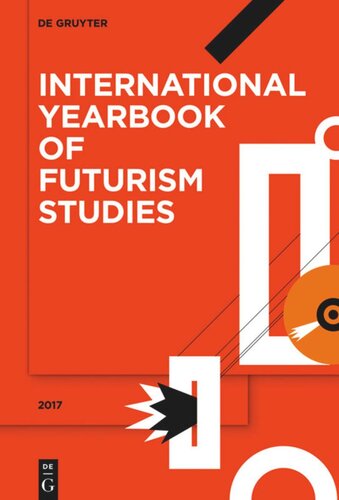

Most ebook files are in PDF format, so you can easily read them using various software such as Foxit Reader or directly on the Google Chrome browser.
Some ebook files are released by publishers in other formats such as .awz, .mobi, .epub, .fb2, etc. You may need to install specific software to read these formats on mobile/PC, such as Calibre.
Please read the tutorial at this link: https://ebookbell.com/faq
We offer FREE conversion to the popular formats you request; however, this may take some time. Therefore, right after payment, please email us, and we will try to provide the service as quickly as possible.
For some exceptional file formats or broken links (if any), please refrain from opening any disputes. Instead, email us first, and we will try to assist within a maximum of 6 hours.
EbookBell Team

5.0
38 reviewsFuturism Studies in its canonical form has followed in the steps of Marinetti's concept of Futurisme mondial, according to which Futurism had its centre in Italy and a large number of satellites around Europe and the rest of the globe. Consequently, authors of textbook histories of Futurism focus their attention on Italy, add a chapter or two on Russia and dedicate next to no attention to developments in other parts of the world. Futurism Studies tends to sees in Marinetti's movement the font and mother of all subsequent avant-gardes and deprecates the non-European variants as mere 'derivatives'.
Vol. 7 of the International Yearbook of Futurism Studies will focus on one of these regions outside Europe and demonstrate that the heuristic model of centre – periphery is faulty and misleading, as it ignores the originality and inventiveness of art and literature in Latin America. Futurist tendencies in both Spanish and Portuguese-speaking countries may have been, in part, 'influenced' by Italian Futurism, but they certainly did no 'derive' from it.
The shift towards modernity took place in Latin America more or less in parallel to the economic progress made in the underdeveloped countries of Europe. Italy and Russia have often been described as having originated Futurism because of their backwardness compared to the industrial powerhouses England, Germany and France. According to this narrative, Spain and Portugal occupied a position of semi-periphery. They had channelled dominant cultural discourses from the centre nations into the colonies. However, with the rise of modernity and the emergence of independence movements, cultural discourses in the colonies undertook a major shift. The revolt of the European avant-garde against academic art found much sympathy amongst Latin American artists, as they were engaged in a similar battle against the canonical discourses of colonial rule. One can therefore detect many parallels between the European and Latin American avant-garde movements. This includes the varieties of Futurism, to which Yearbook 2017 will be dedicated.
In Europe, the avant-garde had a complex relationship to tradition, especially its 'primitivist' varieties. In Latin America, the avant-garde also sought to uncover and incorporate alternative, i.e. indigenous traditions. The result was a hybrid form of art and literature that showed many parallels to the European avant-garde, but also had other sources of inspiration. Given the large variety of indigenous cultures on the American continent, it was only natural that many heterogeneous mixtures of Futurism emerged there.
Yearbook 2017 explores this plurality of Futurisms and the cultural traditions that influenced them. Contributions focus on the intertextual character of Latin American Futurisms, interpret works of literature and fine arts within their local setting, consider modes of production and consumption within each culture as well as the forms of interaction with other Latin American and European centres. 14 essays locate Futurism within the complex network of cultural exchange, unravel the Futurist contribution to the complex interrelations between local and the global cultures in Latin America and reveal the dynamic dialogue as well as the multiple forms of cross-fertilization that existed amongst them.